Pierce History
Howard Pierce was in Chicago in 1912. He began his artistic training at the Art Institute of Chicago and the University of Illinois before moving to California in 1934 to live with an aunt, continuing his education at Pomona College in Claremont.
He married Ellen VanVoorhis, a daughter of Fred and Myrtle VanVoorhis – a Dentist in Claremont California. His family included twins Janet and Linda (now Janet Self of Woodside and Linda Picciotto of Vancouver Canada) born in 1942 and a son, Jerry Pierce born in 1952.
Pierce’s entry into pottery began in the 1930s when he joined William Manker Ceramics, where he quickly became Production Manager. He learned the intricacies of glaze development, mold-making, and the business side of ceramics. By 1941, he struck out on his own, while also working as a World War II draftsman for Douglas. During this period, alongside his wife Ellen (a trained art teacher), he began producing lapel pins with painted, copper, or pewter finishes—early indicators of his later ceramic style.
In 1945, the Pierces opened a home studio in LaVerne, California, and later moved to a new family house and studio in Claremont, where they expanded their production using multiple kilns and developed a reputation for distinctive satin glazes, especially the satin-matte brown on white, which became a hallmark of his work. Howard Pierce personally handled all aspects of production—from sculpting and mold-making to formulating glazes and firing the pieces—resulting in original, hand-crafted American products.
The 1950s and 1960s saw the business grow, with marketing through local and national accounts. However, after the expiration of a major contract in 1966 and increasing urbanization and smog in the Los Angeles basin, Howard and Ellen decided to move to the high desert. They had already been visiting the Morongo Basin since the early 1960s and owned property there. In 1968, they relocated to Joshua Tree, where Howard continued making pottery and porcelain until his death in 1994.
In Joshua Tree, Pierce’s work was inspired by the Mojave Desert, resulting in a wide variety of animal and human figurines, as well as larger concrete sculptures for his property and local community. His designs were characterized by simple, flowing forms, reflecting both his surroundings and a devotion to children and animals. He also created experimental pieces in materials such as polyurethane, pewter, bronze, aluminum, hydrocal, and plaster.
Howard Pierce remained active in ceramics until his death in 1994. His work is highly collectible today, and he is recognized as an important figure in American ceramics, with pieces featured in many books and collections. His legacy includes not only his distinctive pottery and figurines but also his influence on mid-century modern design and his contribution to the cultural life of the Joshua Tree community.
To say the least, Howard and Ellen LOVED Joshua Tree. They started coming to Morongo Basin in the early 60’s and purchased 5 acres ON 29 palm highway. It was their vacation cabin. It was located across from the Yucca Valley airport, at about the same place that Walmart is now located. Howard designed the square house – one bathroom and the rest of the house was an open area with a kitchen area, living room and an alcove with a bed. The design was based roughly on Frank Lloyd Wright’s influence – it had a high peak on the front and lots of glass. Similar to the design of the house in Joshua Tree. Howard, Ellen and Jerry would take the 2 hour drive from Claremont many weekends to spend time in the High Desert (about 3,200′ altitude – much above Palm Springs – which is at or below sea level).
Around 1966 CMC college decided to build a stadium on the track across from the Pierce’s home in Claremont. This was going to kill the view of Mt. Baldy and the hills. Along with the ever increasing smog in the LA basin, Howard and Ellen decided to move to the High Desert. They had found a 20 acre piece of land on the south side of Joshua Tree. No one could ever block their view! It backed onto a 1 square acre of land that was unoccupied and was adjacent to the Joshua Tree Monument (that became the Joshua Tree National Park).
So they had a road built up to the second-best pad for a house. There was a better pad up higher, but Howard wanted to save it for a future building (never happened). They created two pads for a house and a studio. Howard designed the two homes – the studio was designed to be converted into a one bedroom apartment if they wanted in the future. The house was brick and very small with a two car garage. The important part was the full glass windows that gave them the view!
Over time, the view became almost second to the importance of the “pad” in front of the house where all the animals came to visit. Quail visited every morning and they would bring their batch of babies. One day there would be 20 babies, then next day 18, the next day 15 … you get the drift. It was nature! Chipmunks would eat out of a hand (peanuts). Roadrunners would also “beg” for food – balls of ground beef. They would tap on the windows with their beak to get our attention and get fed. Ground Squirrels were considered to be “Hoover” (vacuum cleaner) as they took the bird feed and away it would go. Ellen hated them. Bunnies would appear as well.
We also had coyotes – sometime multiple ones – come visit (and howl at night). We fed them dog food.
But the pad came alive at night as well – fox and skunks could be seen. The Pierces loved the animals and they were always an inspiration for art.
As I find pictures / more stories, I’ll add them here. There was a question in the Facebook Group that asked about the current status of Howard’s larger pieces and that was the inspiration for this page.
Below are some photos I took in 2019 when I was in Joshua Tree for our 50th High School reunion – Yucca Valley High School. Many of his pieces are still around the area. I didn’t get to all of them, but most…
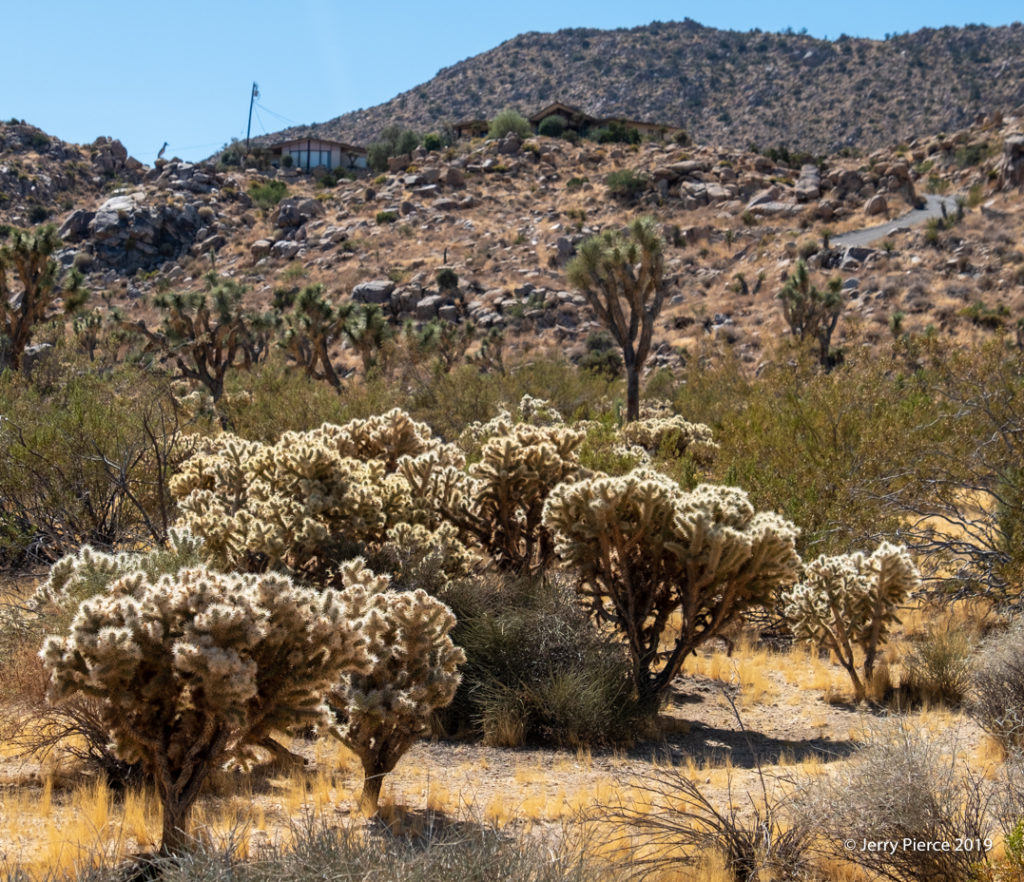
View from Prescott Trail looking up at the main house (on the right) and the studio (left). You can see “Pete” the roadrunner silhouetted to the left of the studio.
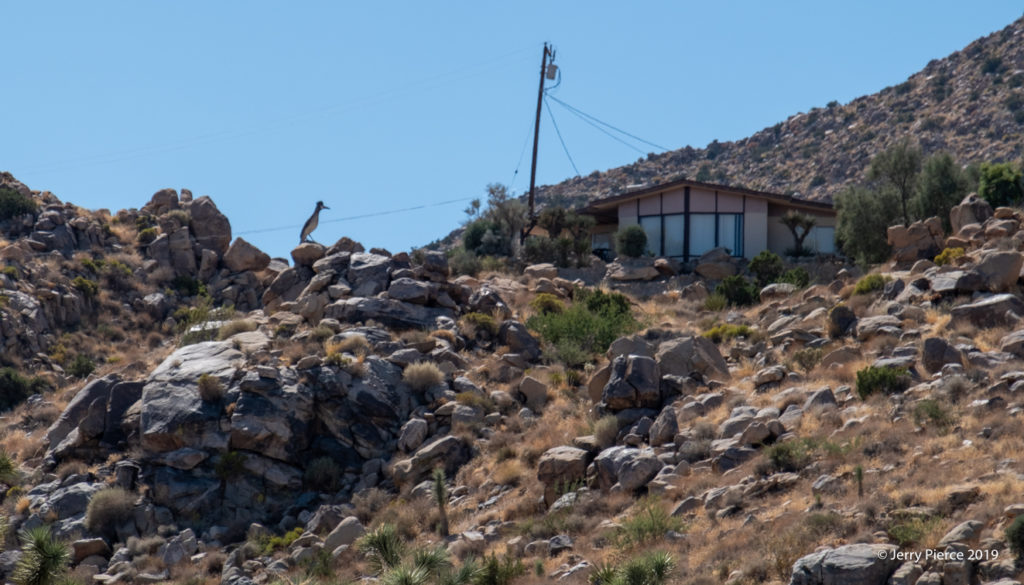
Howard’s studio with Pete.

The Family has become a symbol for High Desert Memorial Hospital in Joshua Tree. Ellen spent many days as a “pink lady” volunteer in the shop.
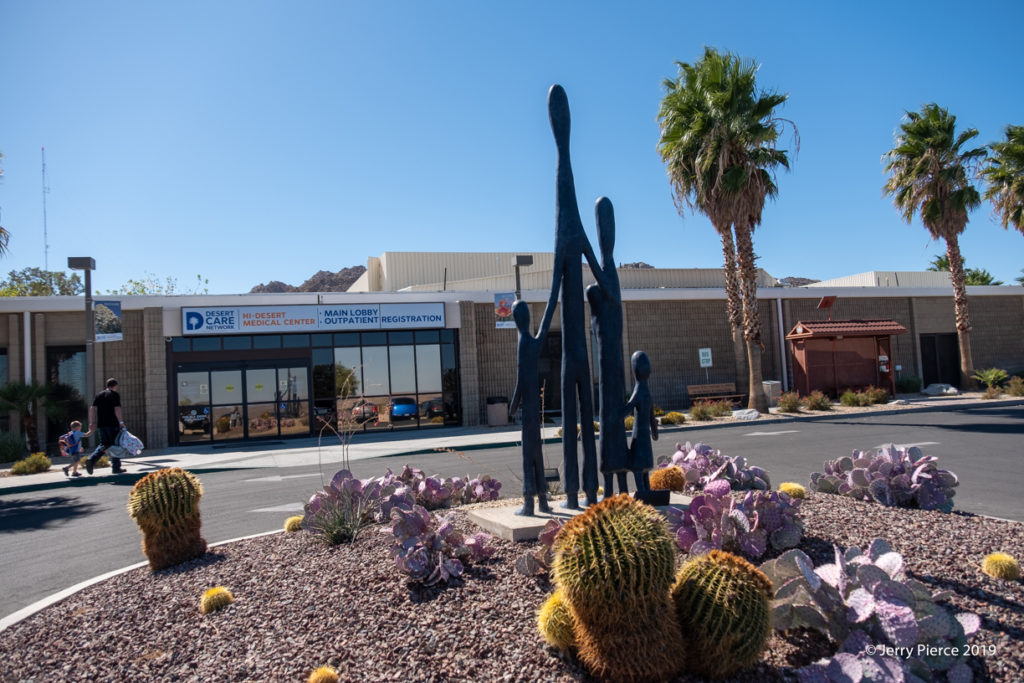
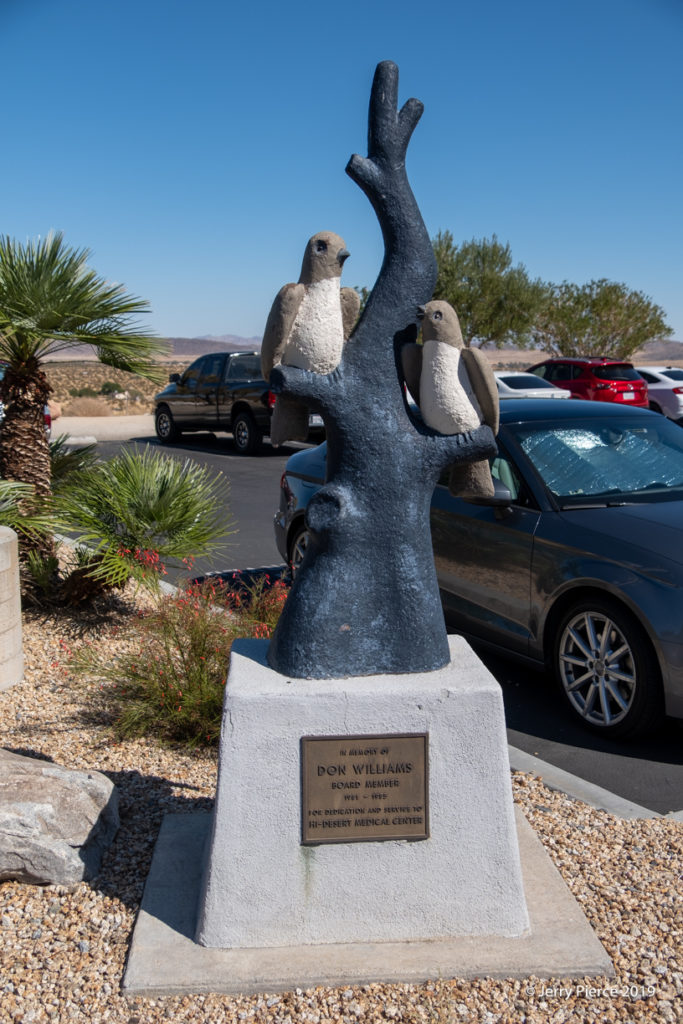
Also at High Desert Memorial Hospital in Joshua Tree. Made from concrete over a wood frame.
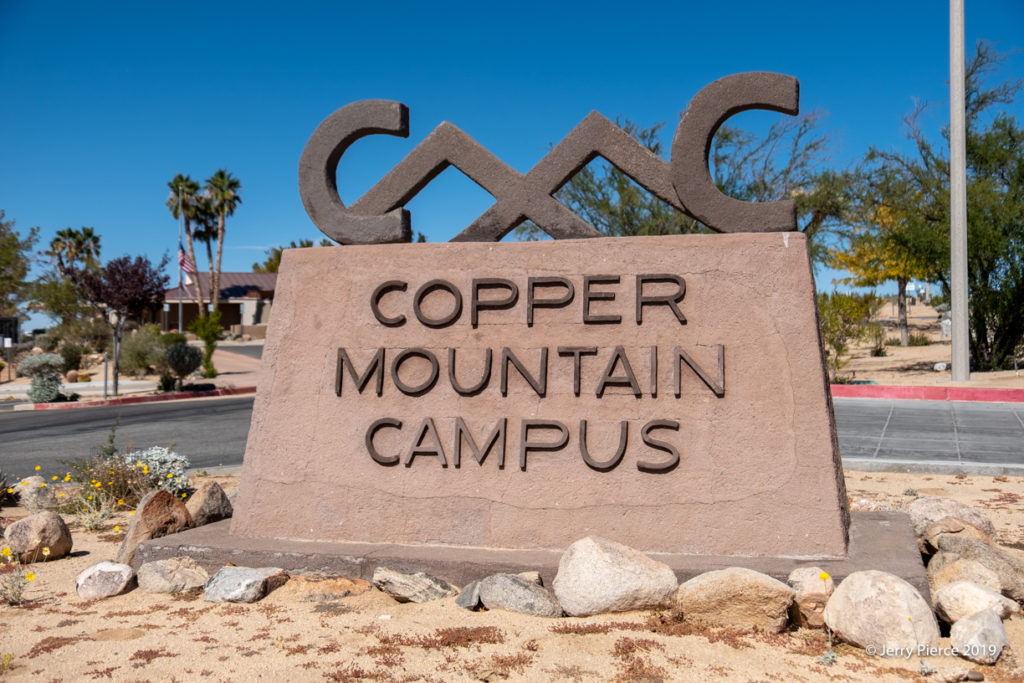
Howard and Ellen were big supporters of the Junior College in Joshua Tree. They made some contributions, but they didn’t have lots of money, so they contributed functional art. Howard made the sign for the campus.
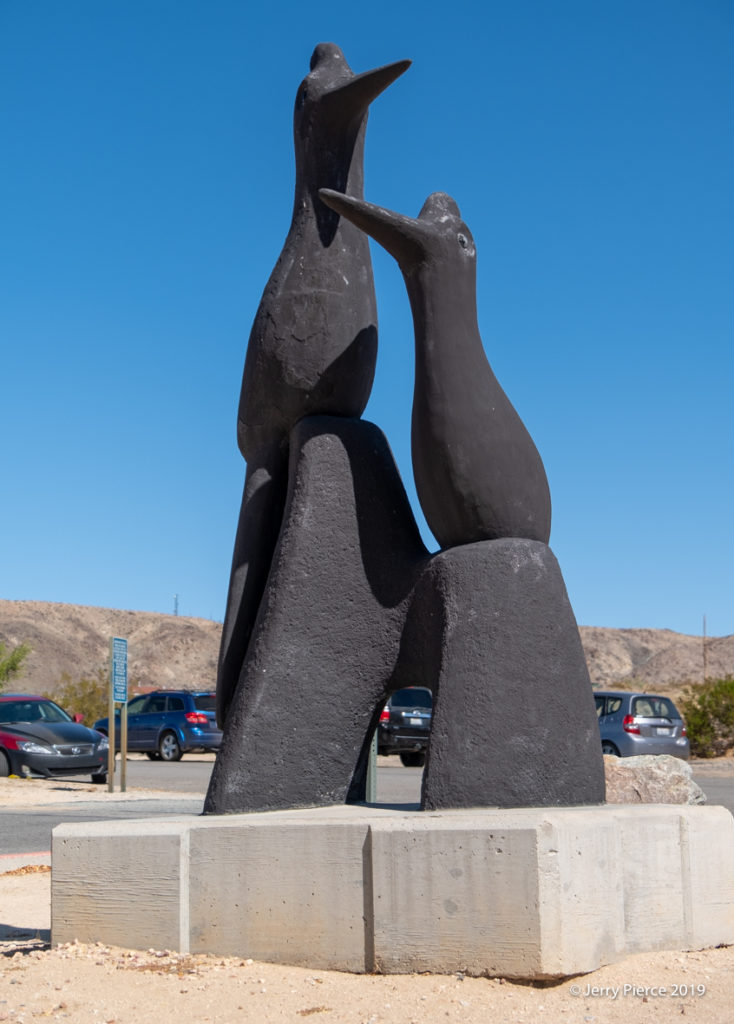
At CMC entry.
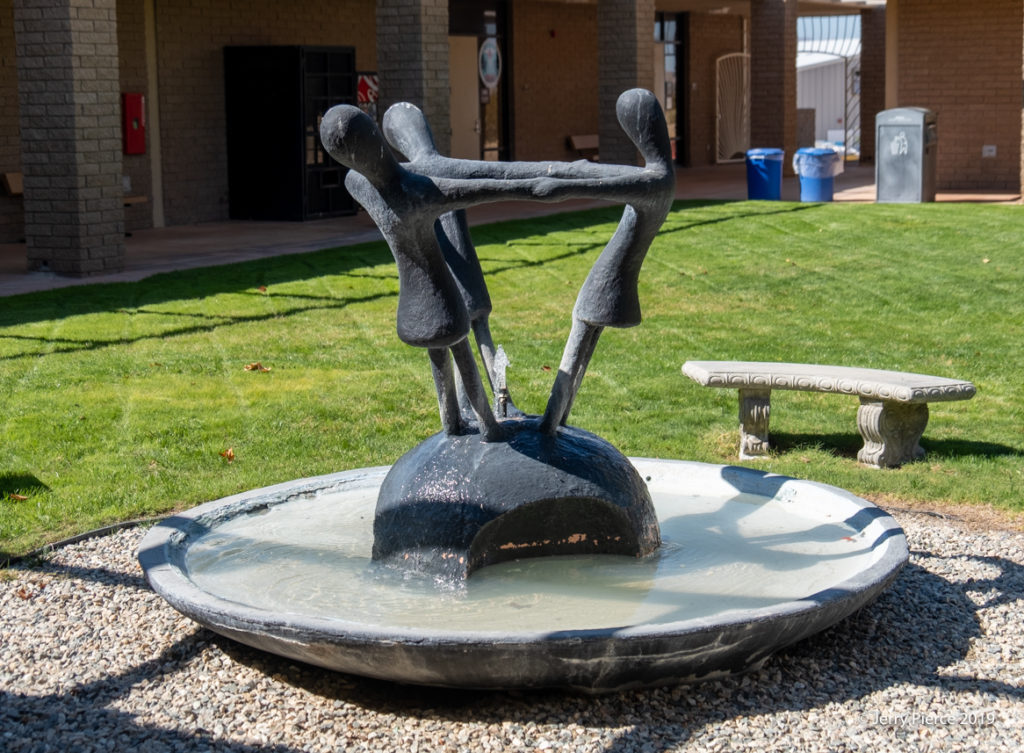
In a courtyard of the CMC campus
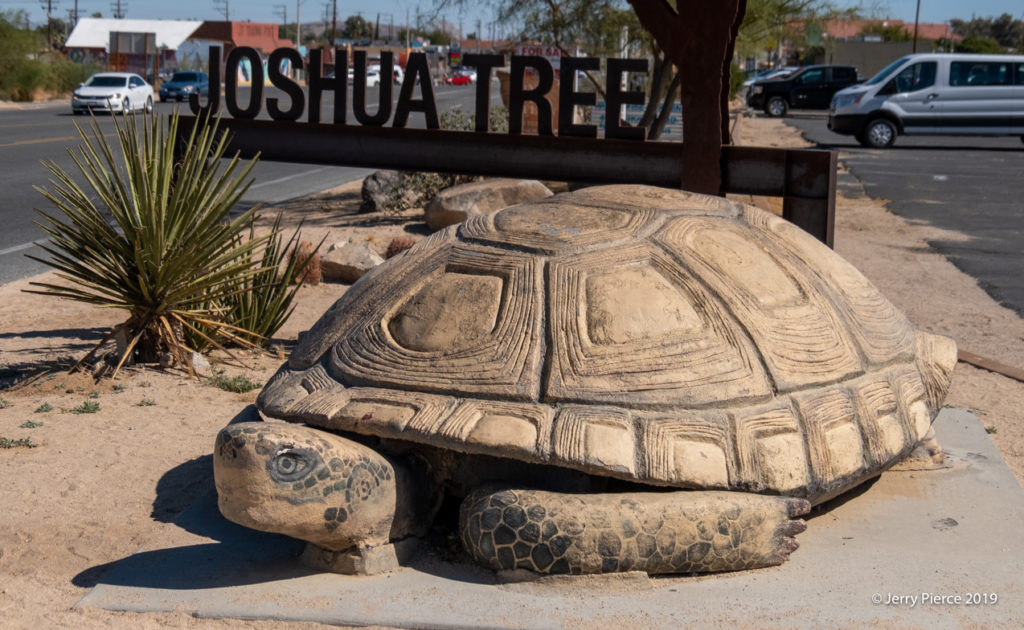
Myrtle originally was a parade float for Yucca Valley celebration. During that celebration Joshua Tree held turtle races (a big circle – I remember it being 60′ in diameter with an inner ring for turtles that were marked with numbers painted on their backs). It was a different time.
Howard did not do the first design of Myrtle, but he did re-work and made it into a much more realistic version of a turtle. It was delivered to its current resting place in front of the Joshua Tree sign on 29 Palms Highway.
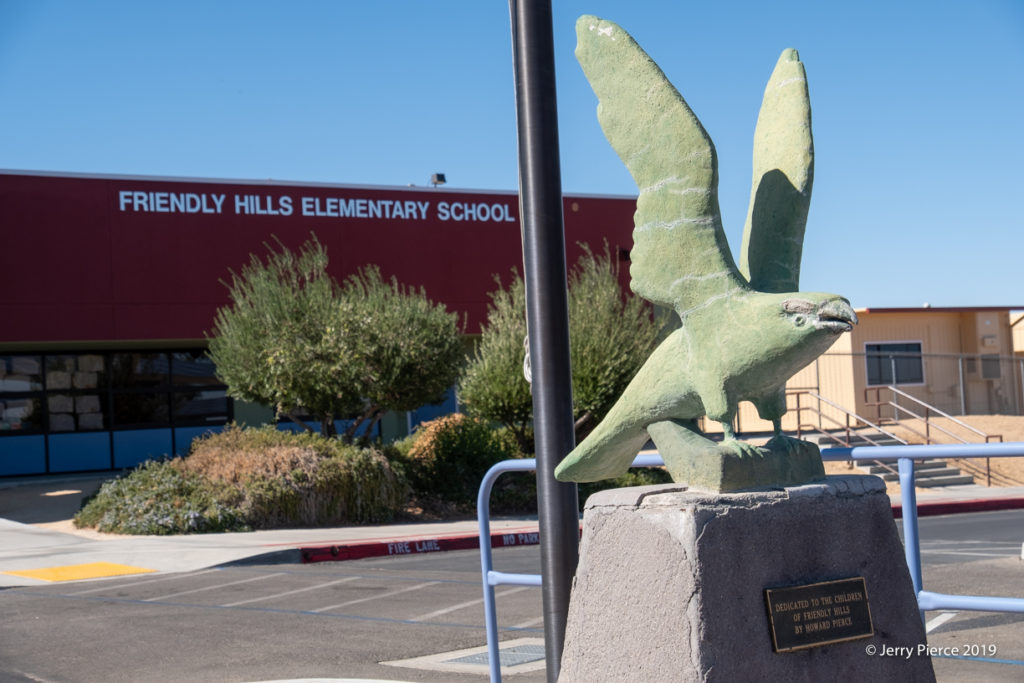
This was given to the Elementary school down the hill from Howard’s house.
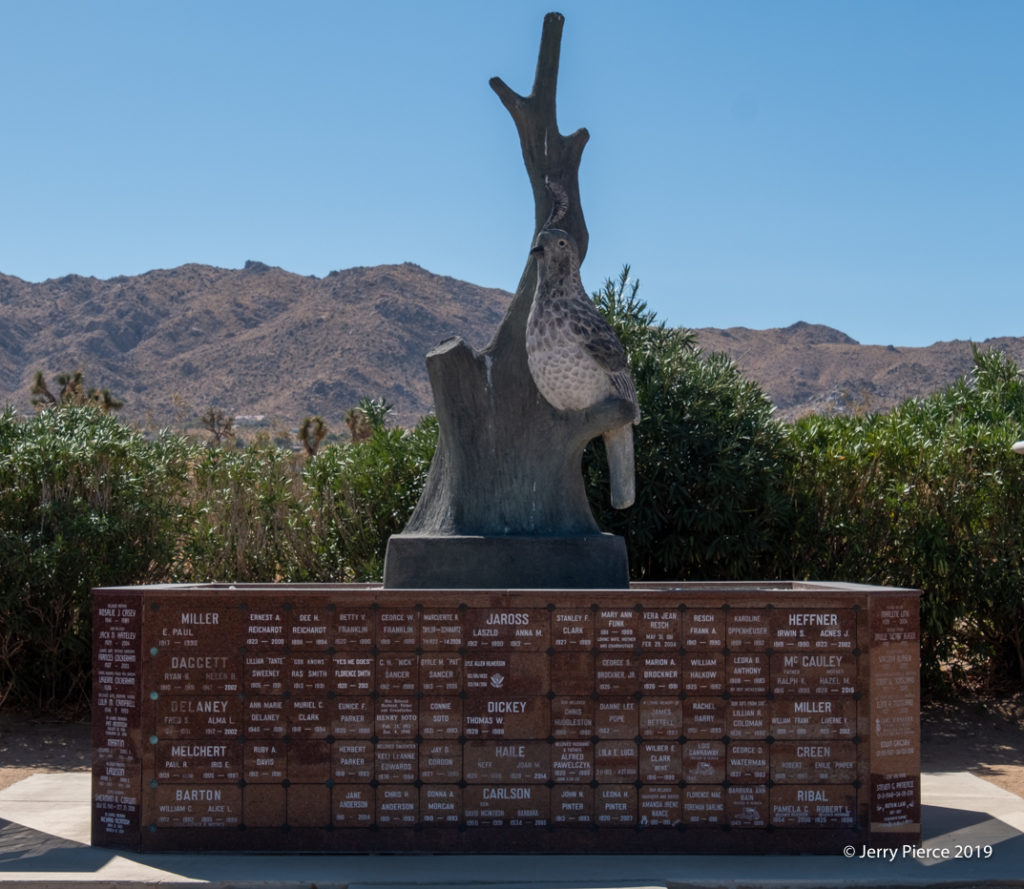
At the High Desert Memorial Park Howard gifted the quail.
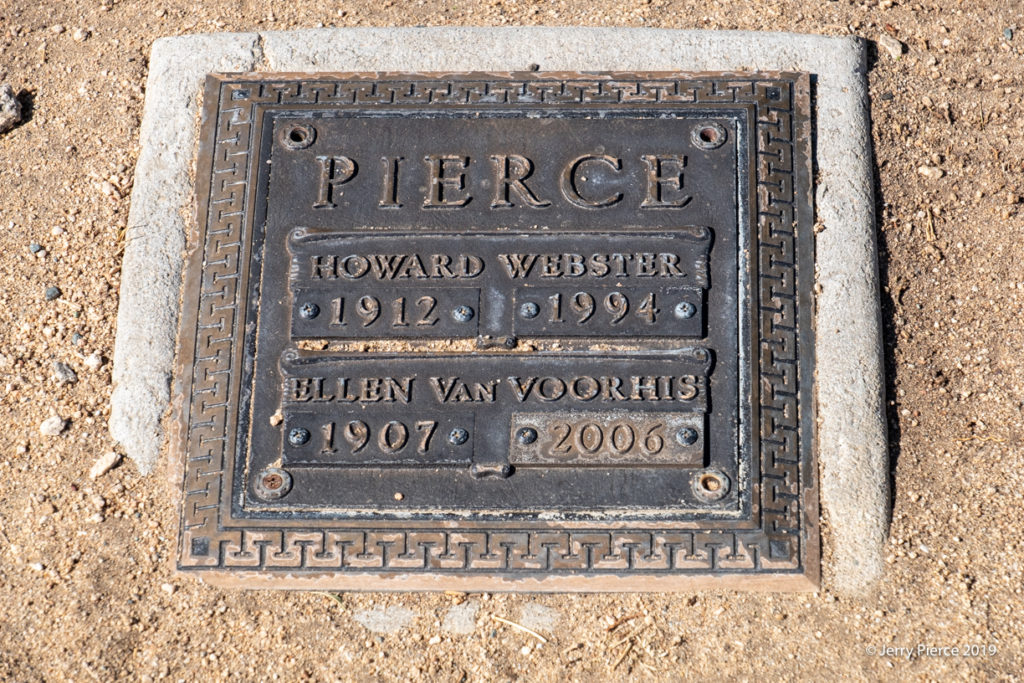
Howard and Ellen’s final resting place in High Desert Memorial Park.
